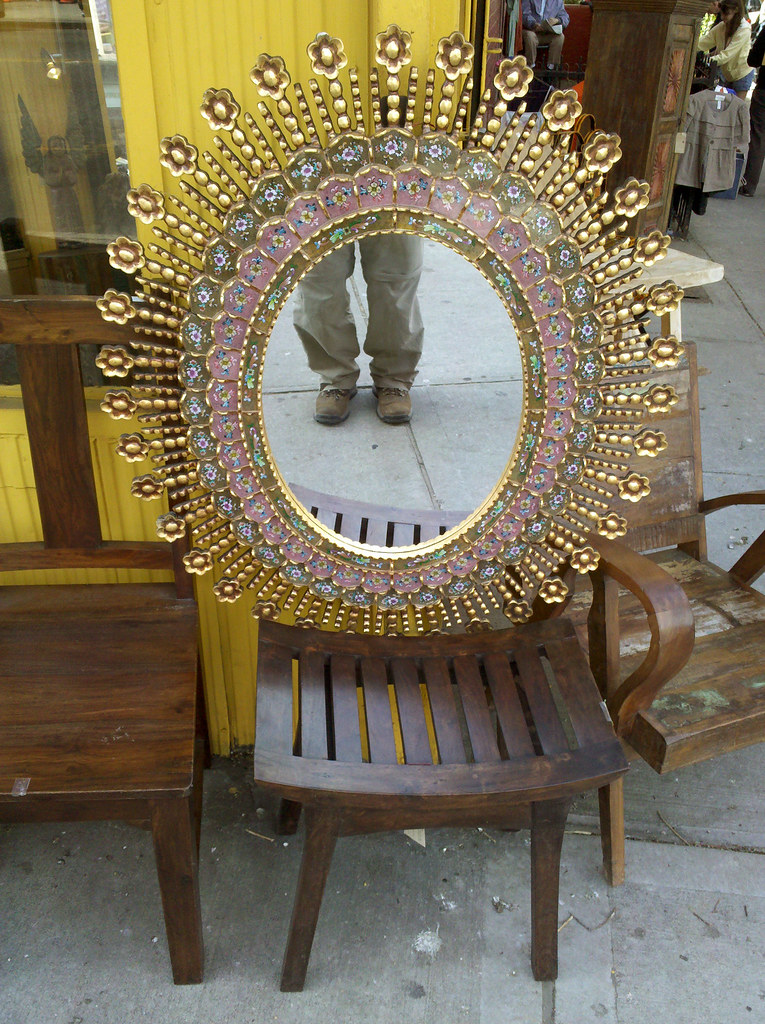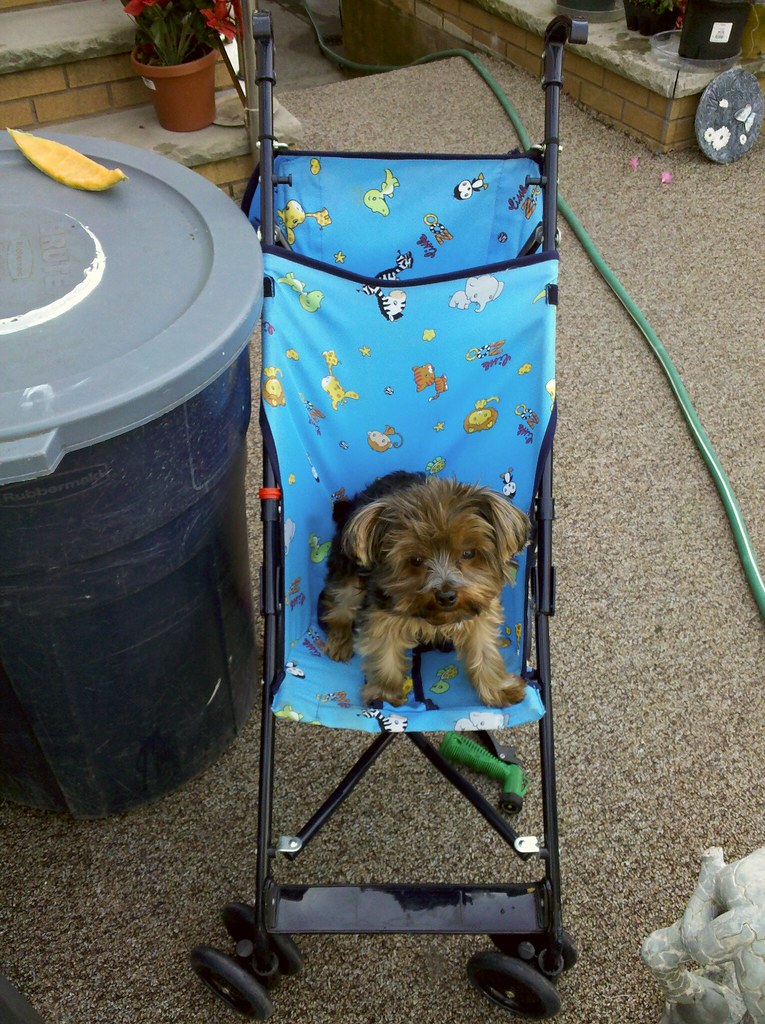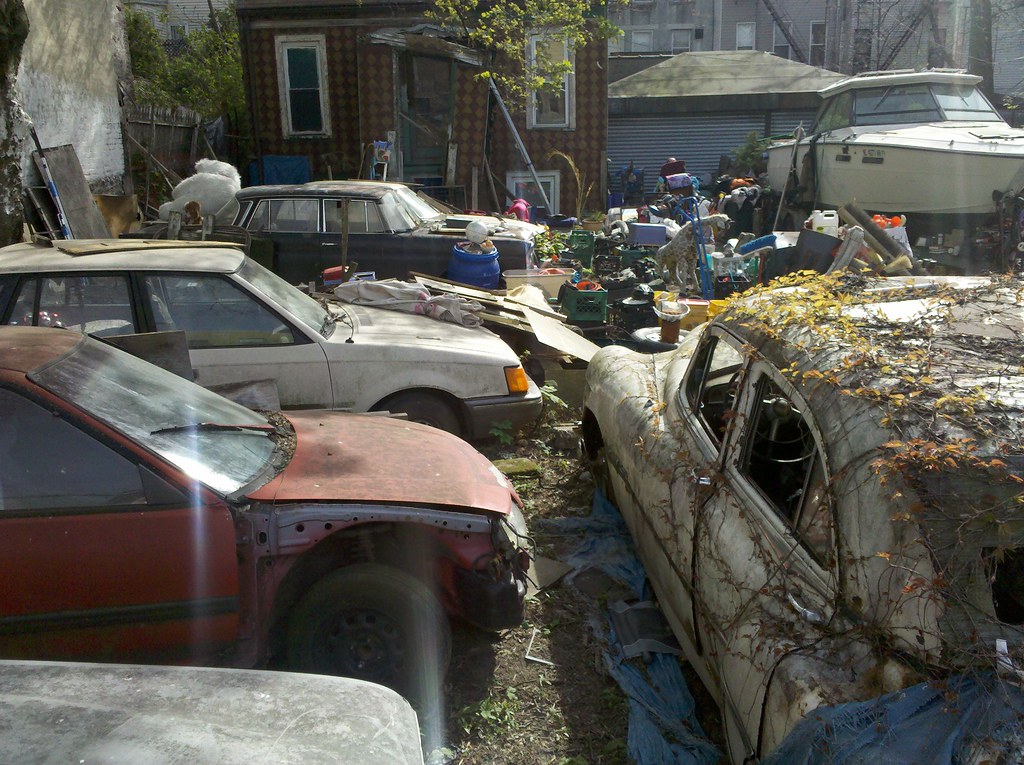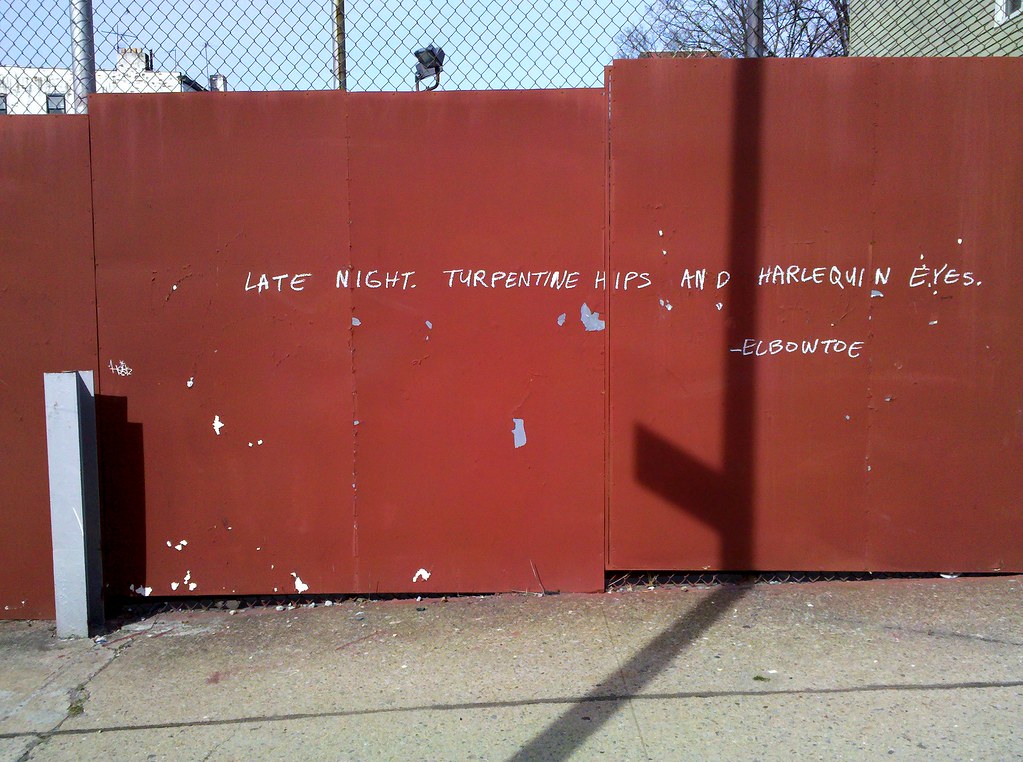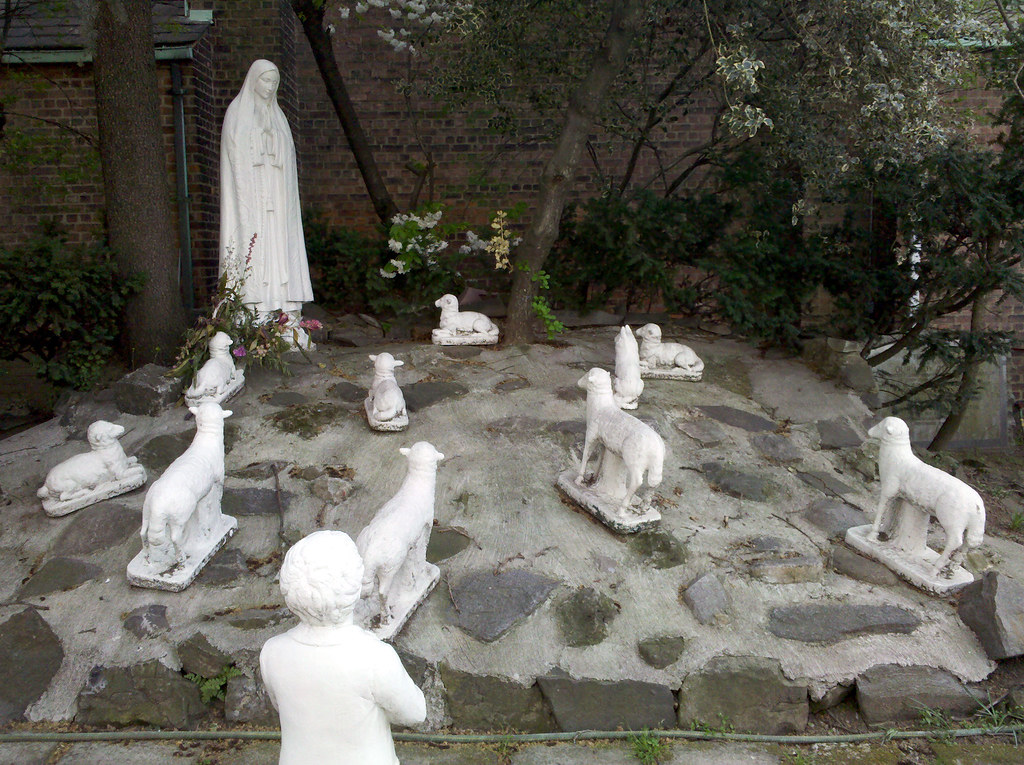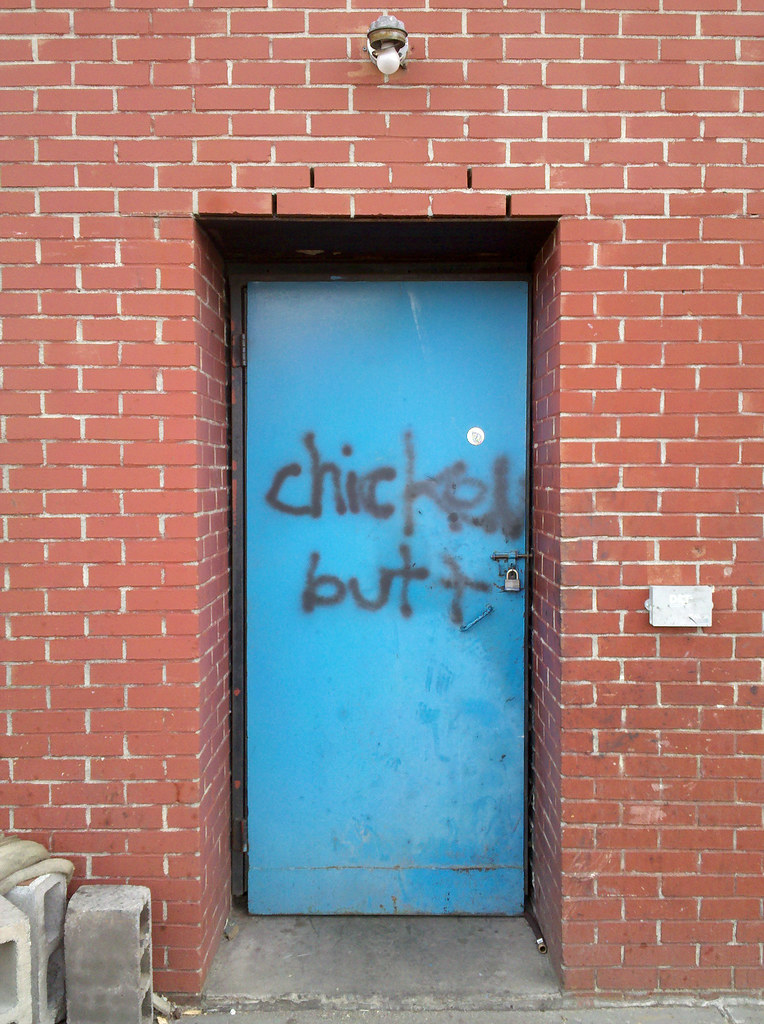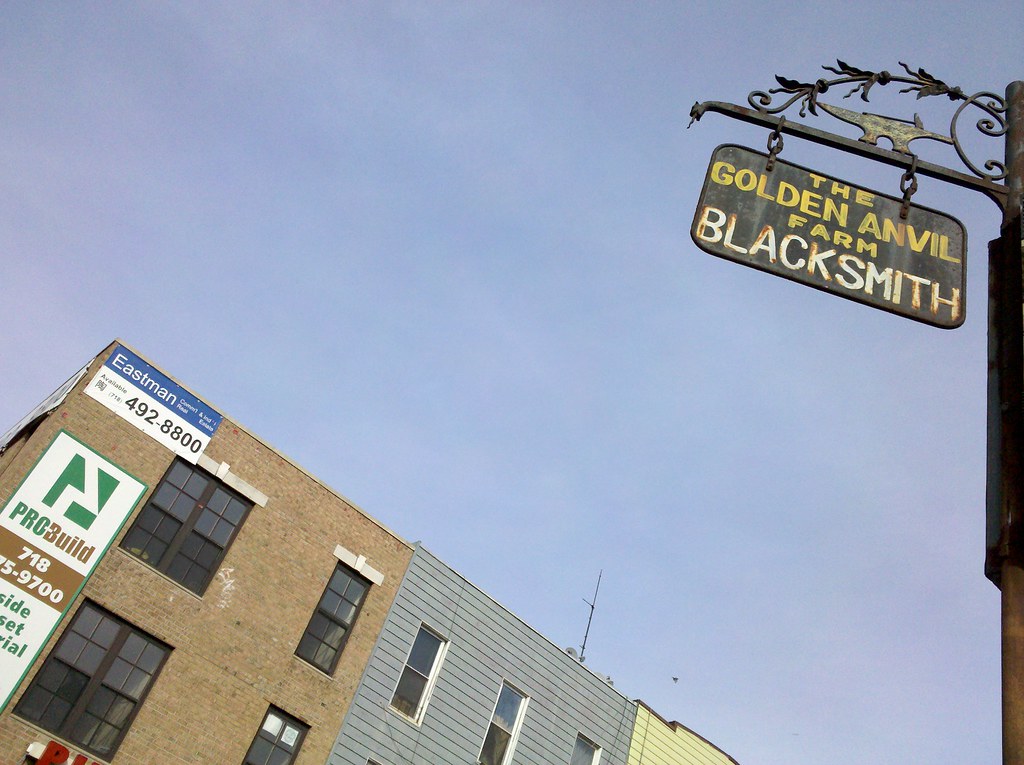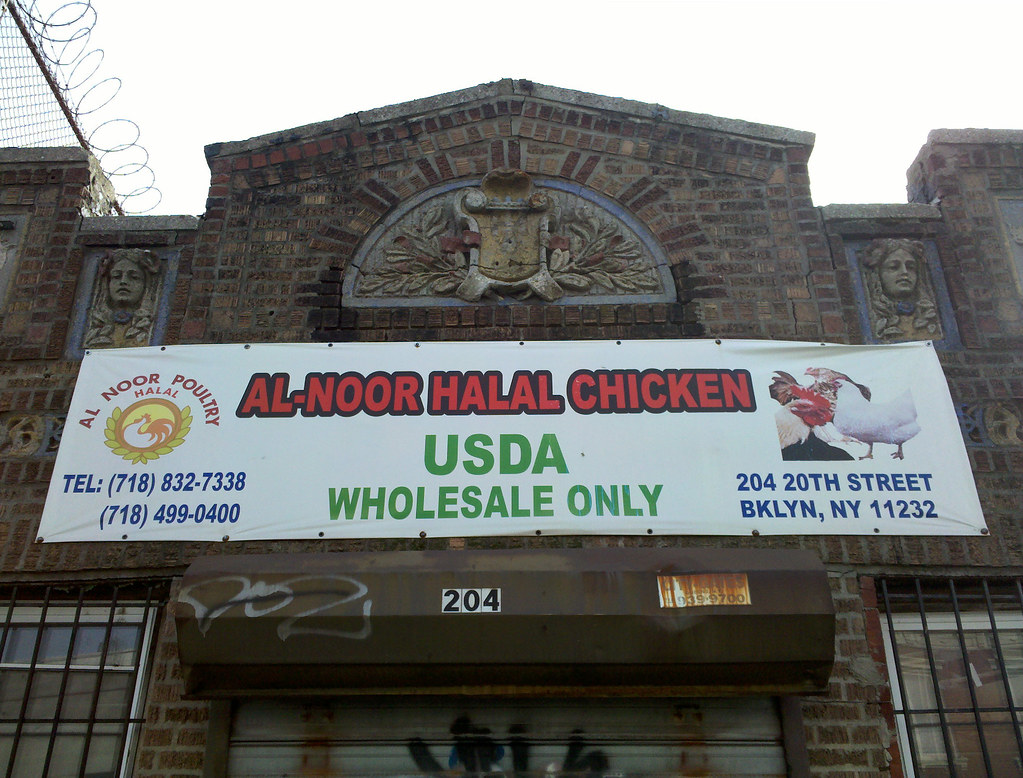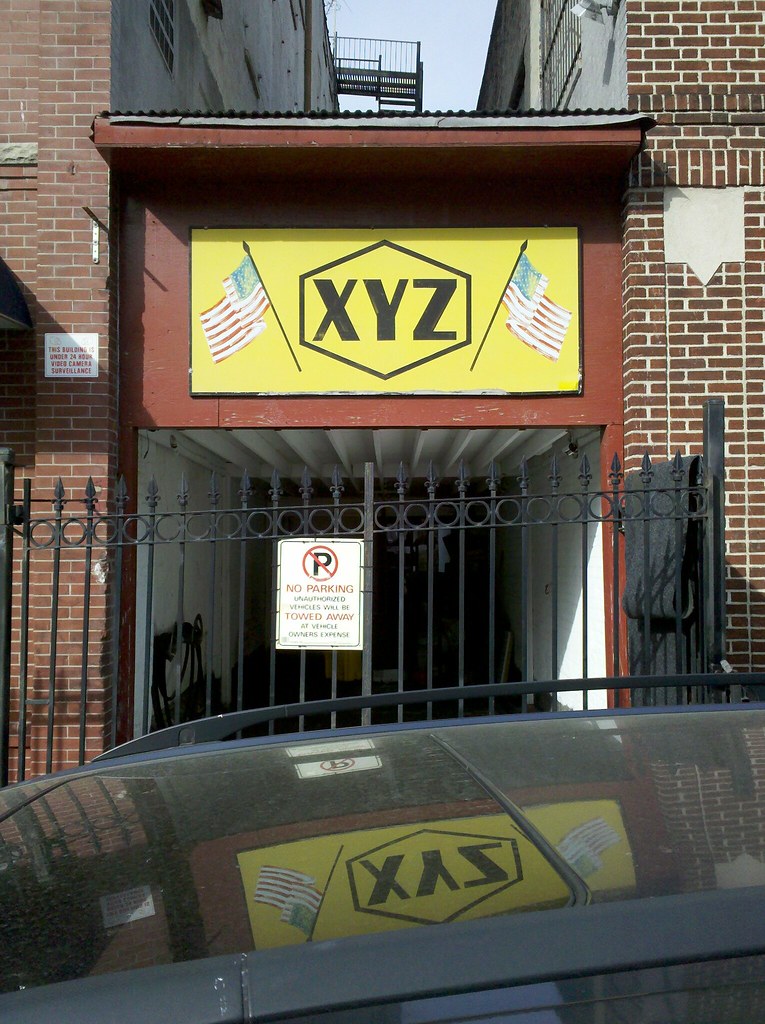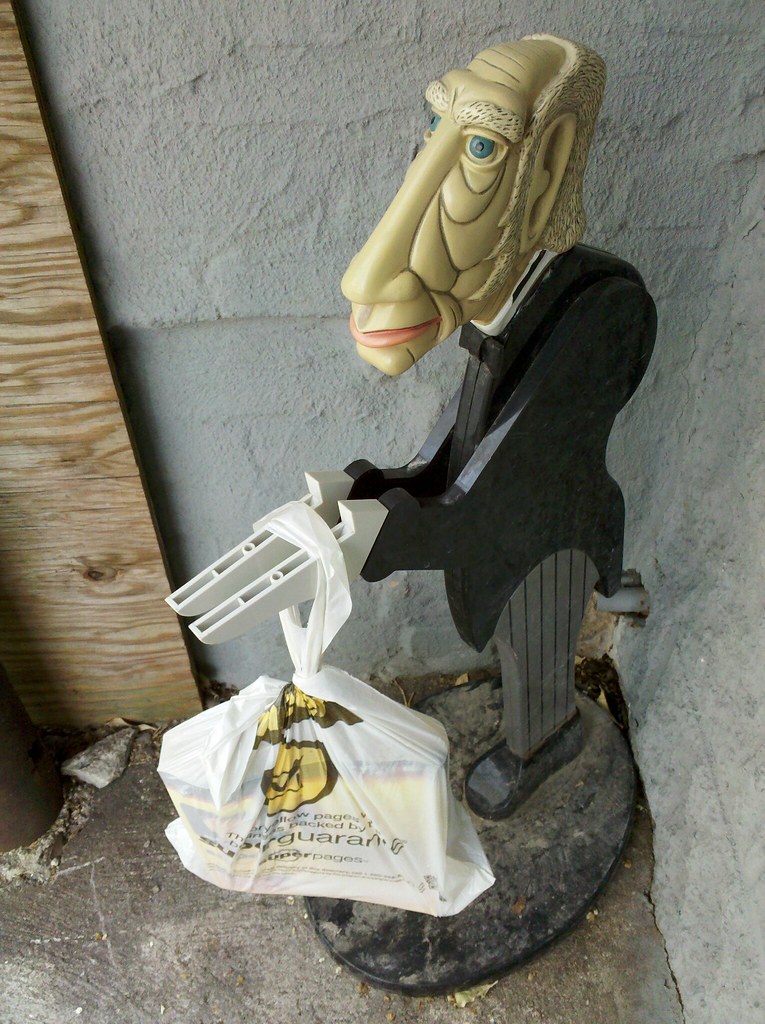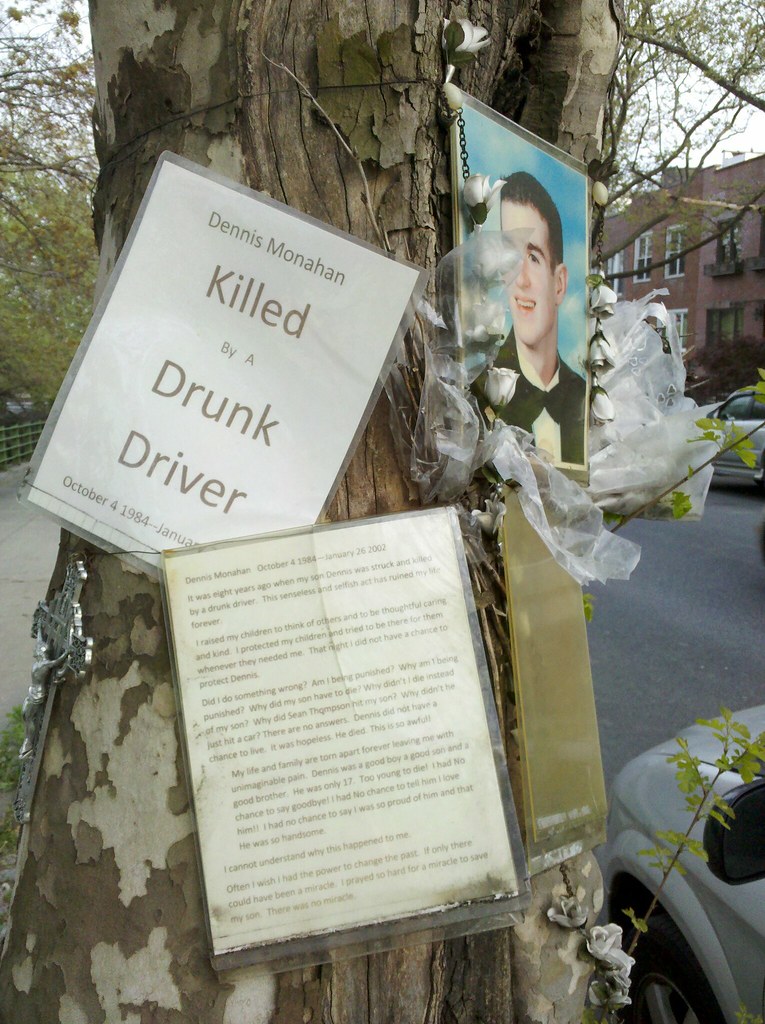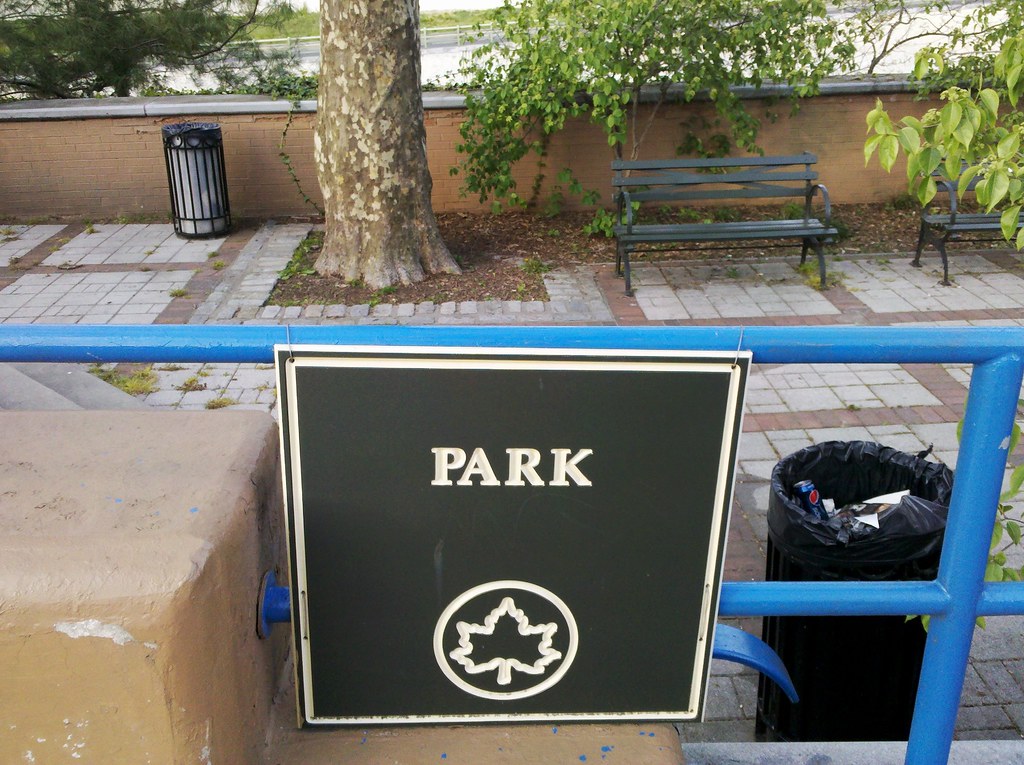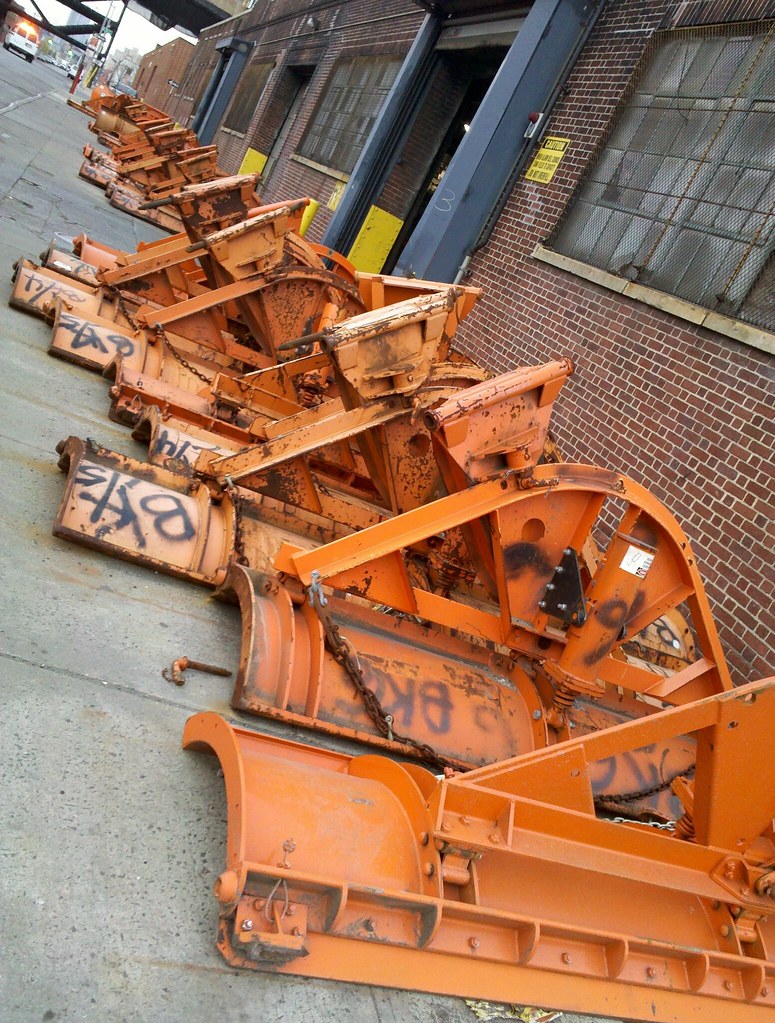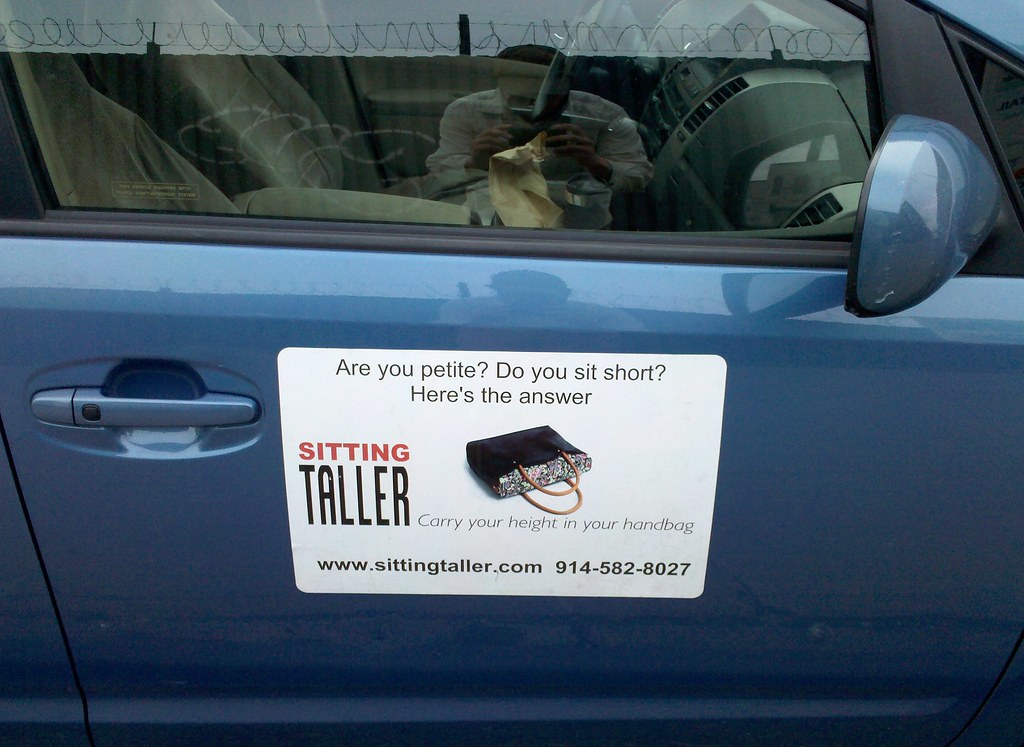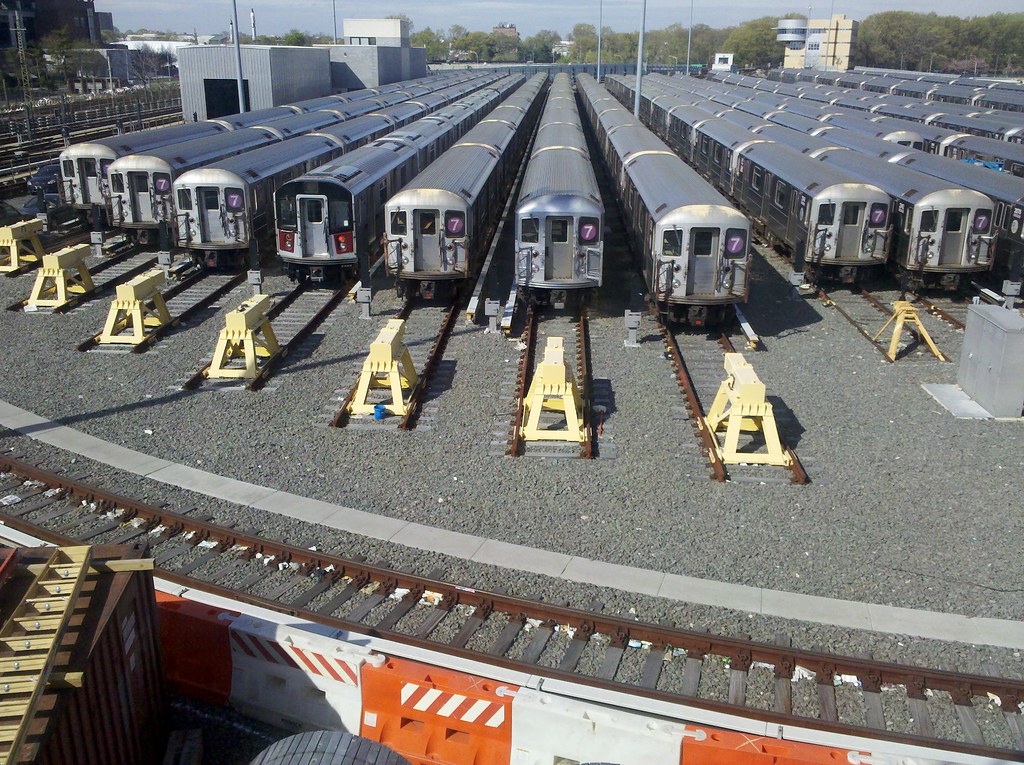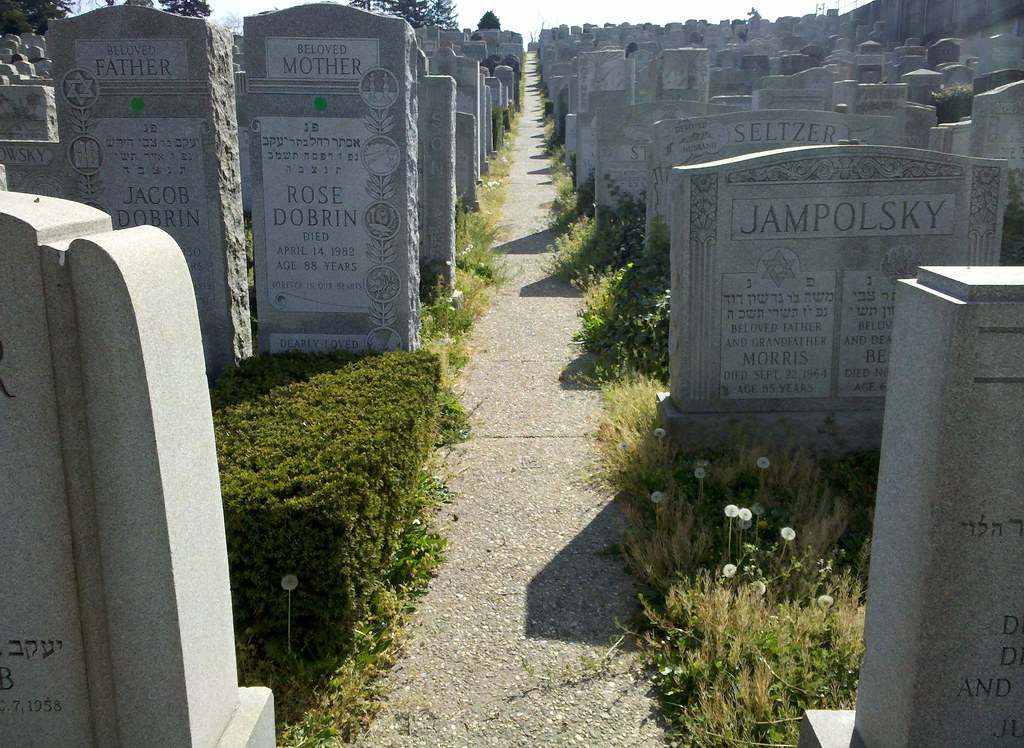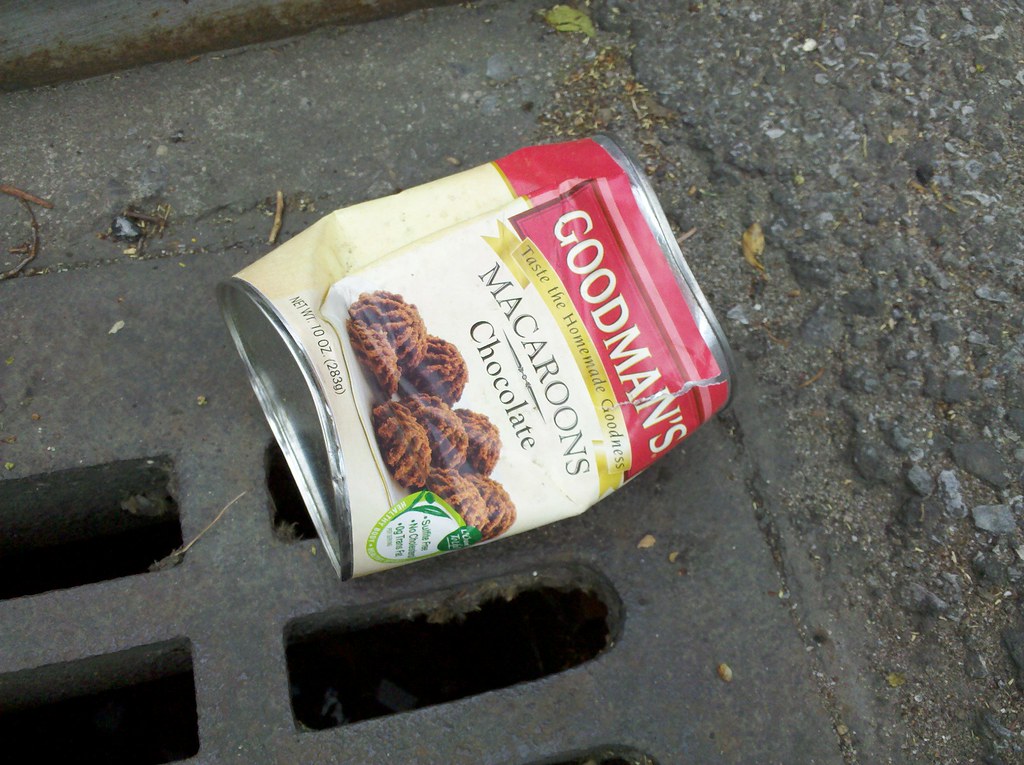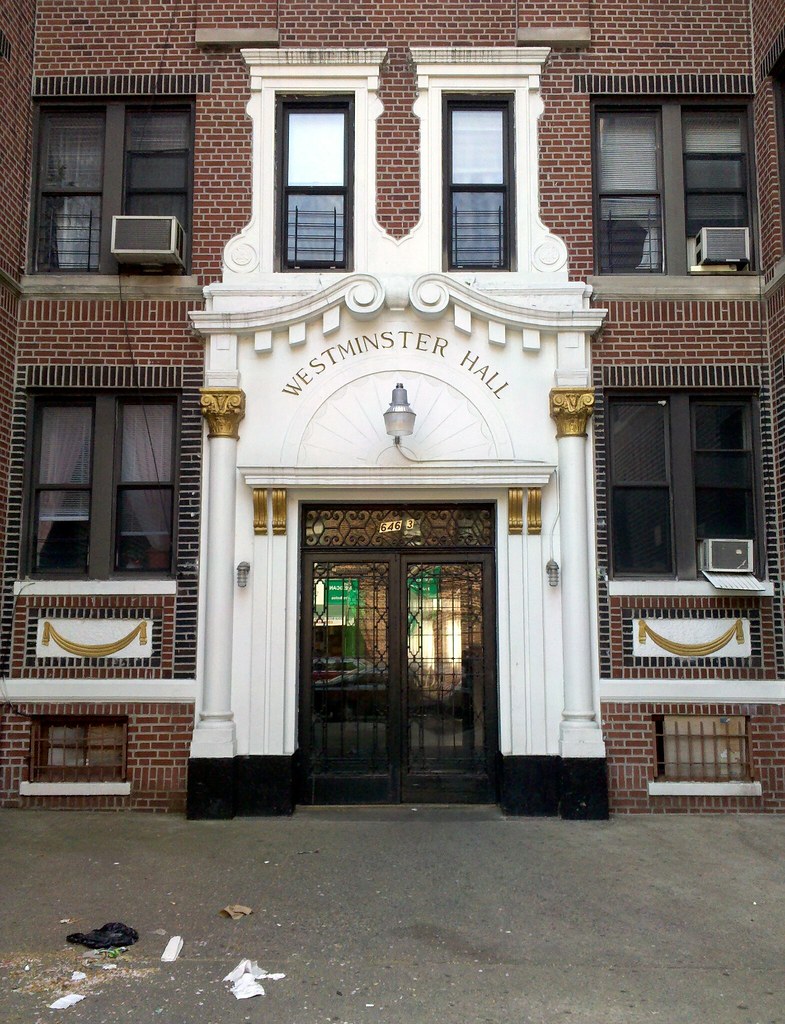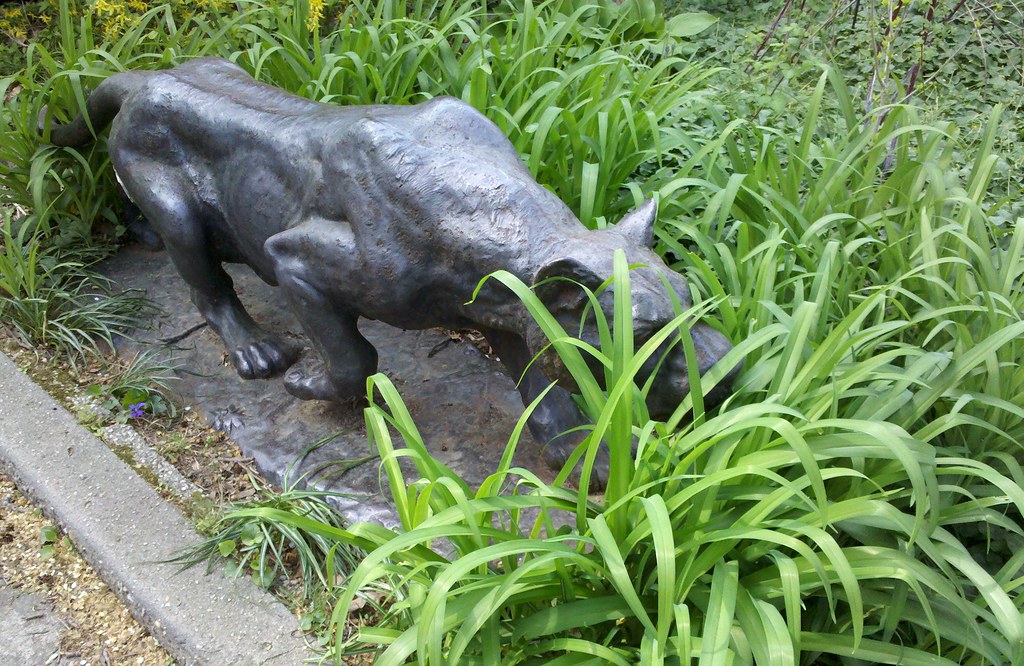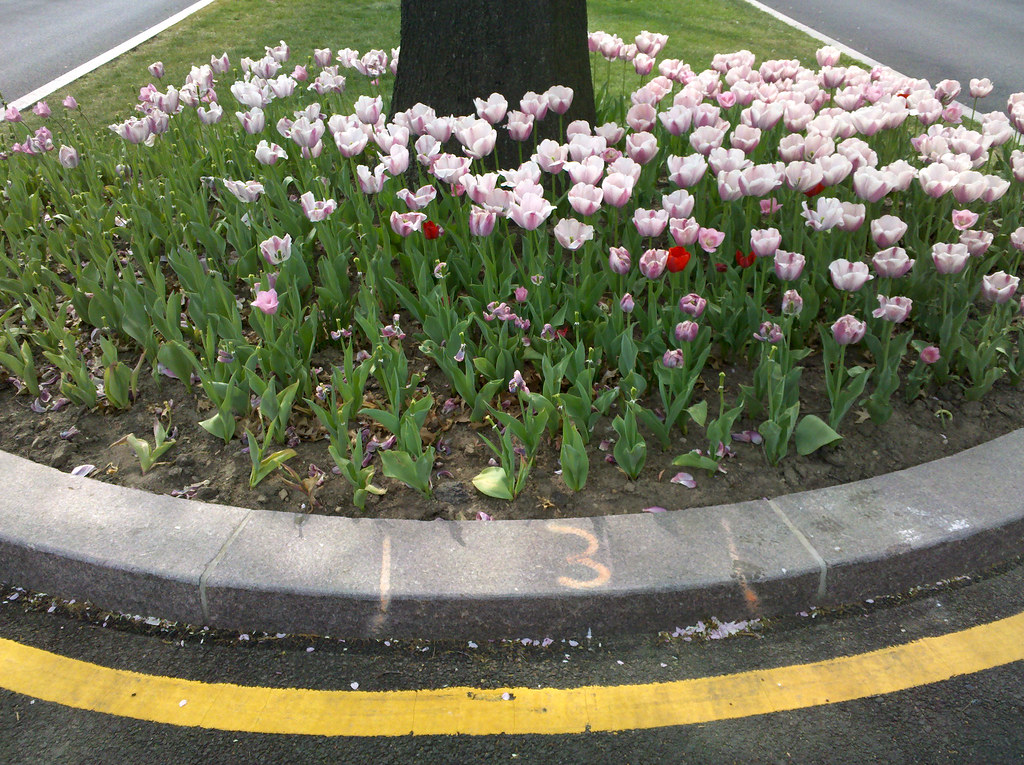
Another parrot nest! (It's the thing that looks like a pile of sticks atop the platform on the left.) This one is located right across the street from Green-Wood Cemetery, a longtime parakeet stronghold.

A kosher Argentinian steakhouse? It's not as strange as it might sound — Jews have a long history in Argentina.

Written messages should be addressed to the owners, not the dogs.

This enormous old neon sign (perched atop a Sanitation garage) is one of a few in the area, and the only one advertising a company that's still in business. We'll pass by the others eventually.

This stretch of wall running down Third Avenue in Brooklyn, between First and Third Streets, is a remnant of Washington Park, a professional baseball park that once stood on this site. For a while, it was commonly believed that this wall dated back to the last couple of years of the 19th century, when the Dodgers* played in Washington Park: in 2007, the NY Times said that the wall "is believed to be the oldest standing piece of a major league ballpark in the country."
In recent years, however, another theory, one more convincing and well-documented, has made its way to the fore, arguing that the wall is a remnant of Washington Park, but that it was constructed in 1914, as part of a more modern facility built for the Tip-Tops of the short-lived Federal League, after the Dodgers had decamped to Ebbets Field.
Either way, it's a physical link to big-league baseball in Brooklyn, and there was a bit of controversy when Con Ed, who has owned the property since the 1920s, decided to demolish part of the wall in 2010. They left what was generally considered to be the "historic" portion in place, however, including the windowed section to the right, which some still believe dates back to the days of the Dodgers.
* The Dodgers had no official team nickname for the first few decades of their existence; their legal name was the Brooklyn Base Ball Club. During their time here in Washington Park, they were known informally as the Bridegrooms, the Superbas, and the Trolley Dodgers.
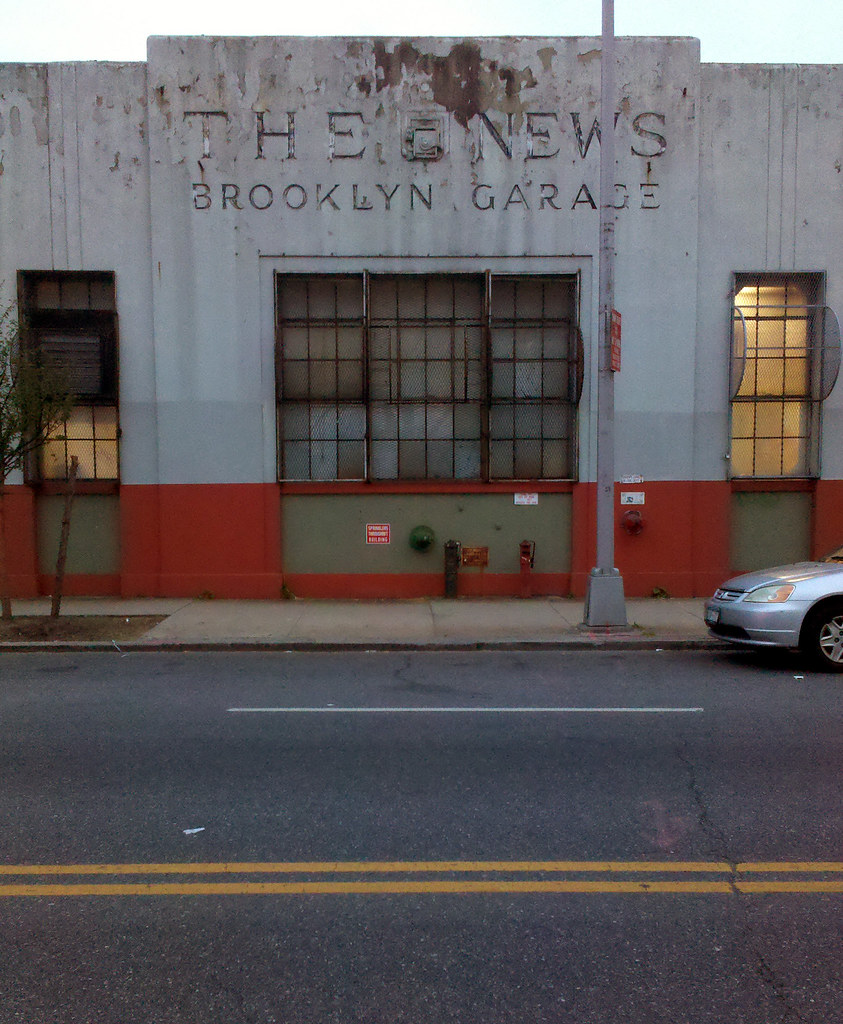
This is an old Daily News garage. You probably can't tell from this photo, but the object in the center of the logo is an old-timey camera; The News called itself "New York's Picture Newspaper" for its first 70 years or so.

This subway yard in Flushing Meadows-Corona Park is the home of the 7 train. Along with the modern passenger cars and assorted work cars, you can always find some old Redbirds parked here. There aren't many of them left, however: the defunct Redbirds have become a hot commodity in their obsolescence, hungrily snatched up by various Atlantic states to be sunk in the ocean and used as artificial reefs. (Other, newer types of subway cars have not fared so well in this role.)
Visible in the background of this shot is the USTA National Tennis Center, where the US Open has been played every year since 1978. Arthur Ashe Stadium, in the center of the image, is the largest tennis stadium in the world.

There is a set of circular mosaics installed in Flushing Meadows celebrating the two World's Fairs that the park hosted. This piece caught my eye — did Andy Warhol really create a tribute to Robert Moses, the despotic chief bureaucrat? The answer to this question, and the fascinating story behind it, can be found here.
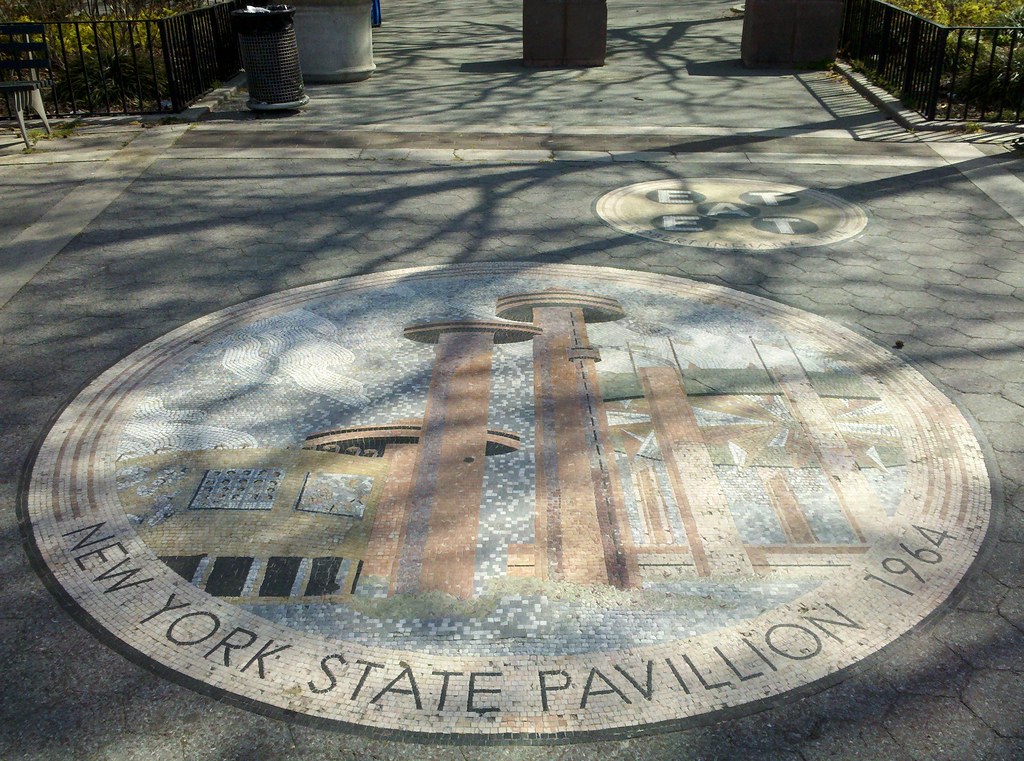
You can see Warhol's Thirteen Most Wanted Men displayed on the wall of the Theaterama! (If you have no idea what I'm talking about, see the previous post.)
The smaller mosaic in the upper right recalls another artwork exhibited at the NYS Pavilion: Robert Indiana's EAT sculpture, which accidentally attracted throngs of hungry fairgoers who mistakenly assumed it was a sign for a restaurant.
Tying this all together, Andy Warhol once shot a film entitled Eat, which features Robert Indiana eating a mushroom for 45 minutes.
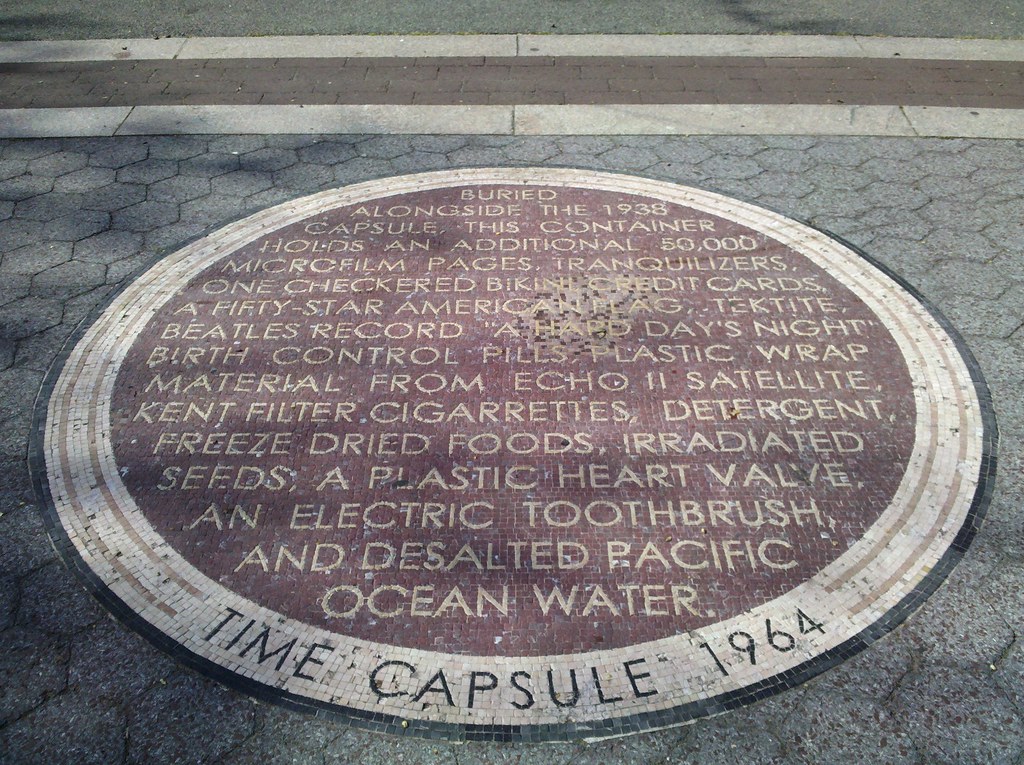
There are two time capsules buried in Flushing Meadows Park, one from each World's Fair. They're intended to stay unopened for 5,000 years! If you're interested in what was included in the capsules, you can find full lists of the contents here (1939-40 fair) and here (1964-65 fair); the mosaic list above is not complete.

Today was my grandma's unveiling, so I headed out to Mount Hebron and met my family for the ceremony. As you may be able to deduce from the headstone, Shirley's main joy in life was feeding people. She spent most of her time either cooking or thinking about what to cook next. I probably owe at least an inch of my waistline to her famous ten-course mid-morning "lunches". On an earlier visit to her gravesite in the fall, I noticed some purslane growing from the dirt above her body, so I picked it and ate it. Even in death...
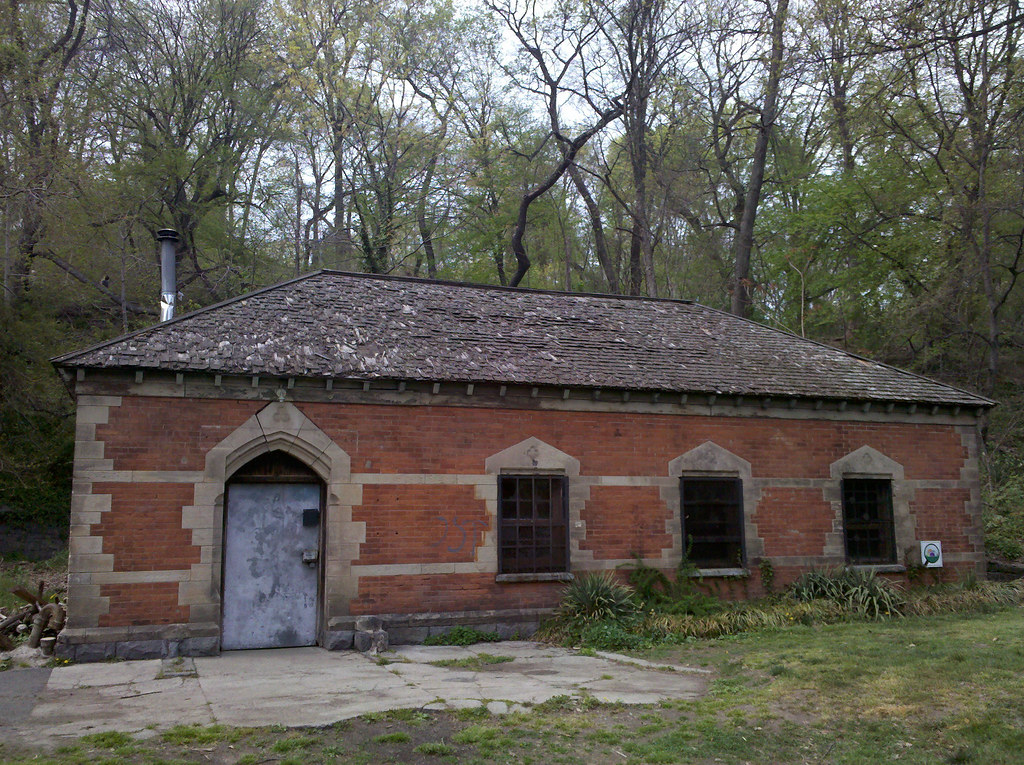
Built in 1869, this building sits beside a well that once pumped about 750,000 gallons of water per day into a nearby reservoir, which in turn fed the park's artificial watercourse (all the bodies of water in Prospect Park are man-made). When Brooklyn became part of New York City in 1898, it gained access to the city's water supply system, and the well and reservoir were no longer needed.
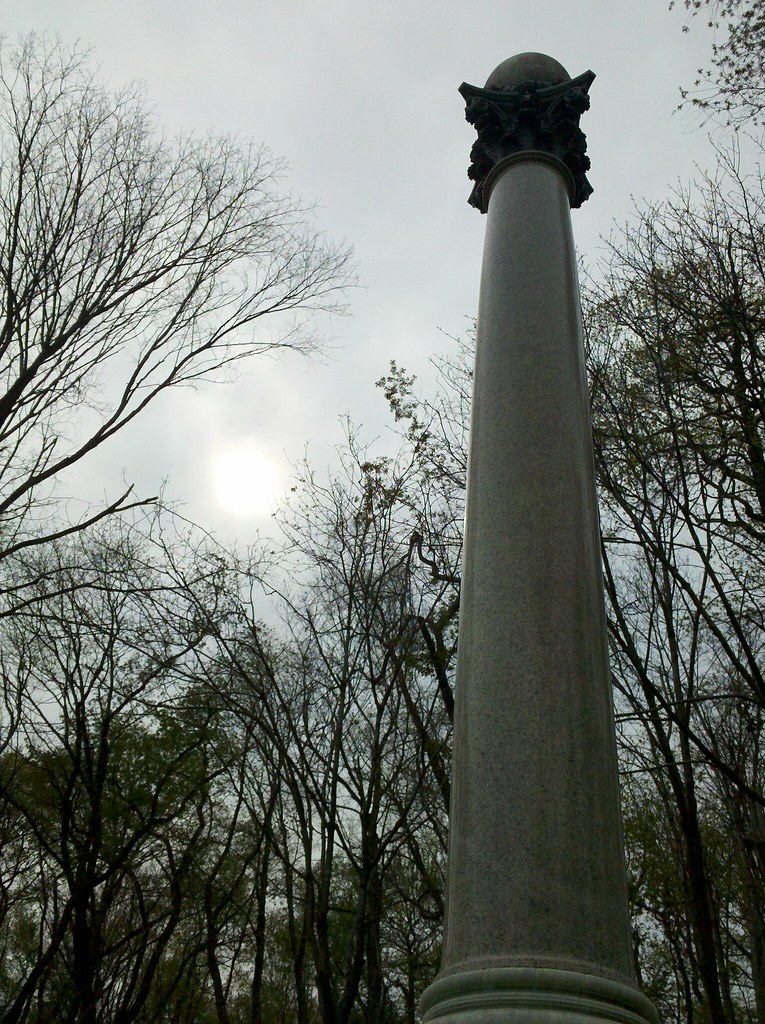
This column memorializes the Maryland 400, whose gallant efforts and sacrifice during the Battle of Long Island (the first major battle of the Revolutionary War) "saved the American army", according to a plaque on the monument, allowing the Americans, severely outnumbered and outgunned by the British, to successfully retreat to Manhattan. Have you ever looked at a Maryland quarter and wondered how the state got its nickname? Well, now you know!

